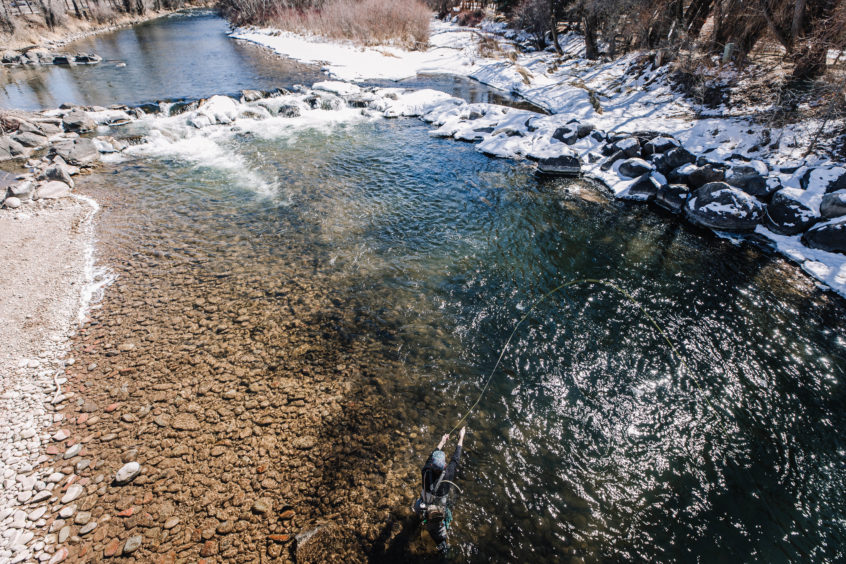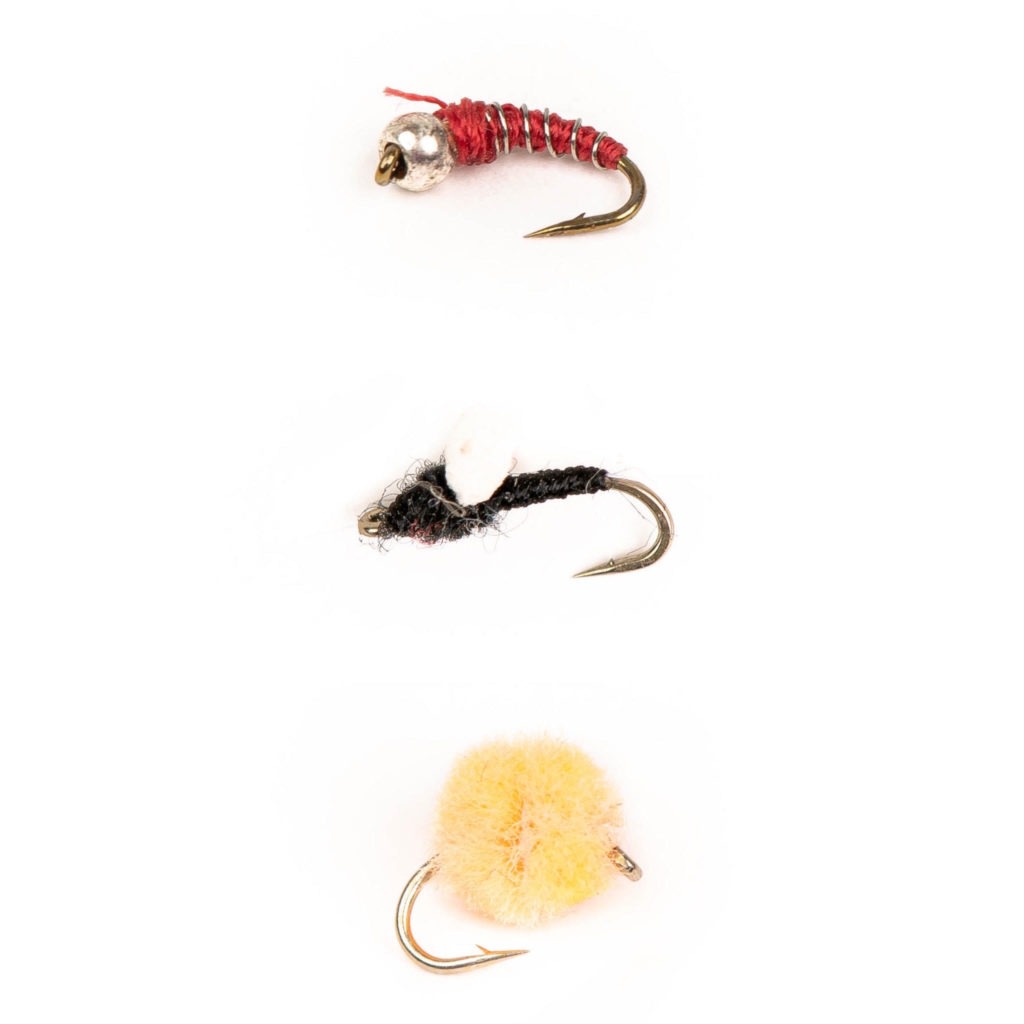Winter is one of our favorite times of year to fly fish here on the Roaring Fork River! Many people think of fly fishing as a warm weather affair, but the winter means less fishermen and more fish for those willing to get out there. Ski season isn’t quite in full swing — in fact it’s off to a pretty slow start this year — so the next few weeks are the perfect time to get out and discover the wonders of winter fly fishing. Snow-covered banks, icicles dripping with sunlight, and the dazzling flashes of a wild trout tugging on your line in clear cold water. It’s a magical experience, and once you try it, you may find yourself reaching for a fly rod instead of your skis!
“But isn’t it too cold for fishing?” you may ask. Well, trout are cold blooded, so their metabolism is regulated by the water temperature. As a result, the majority of their feeding activity in the winter occurs when water temperatures rise in the late morning and afternoon. Lucky for us, that is the warmest time of day in Aspen, so the best time to fish is also the warmest and most comfortable time to fish. If you’re wary of getting out on the water in the winter, don’t be — with a pair of Gore Tex waders (which we provide), wool socks and a few warm layers you’ll be toasty warm and catching fish in no time.

“Isn’t winter fishing more difficult?” you wonder. Actually, trout tend to stack up in slower, deeper pools because they seek to minimize the energy they spend fighting the current and maximize feeding opportunities in colder conditions. The water is also gin clear this time of year, so you can often visually locate fish with a good pair of polarized sunglasses and do some sight fishing! When you find the fish, they are likely concentrated in that section of the river and you are likely to have some fantastic fishing.
“Ok, so the fly fishing is great in the winter. What flies should I use?” Generally small ones. Midges are very tolerant of cold water temperatures and serve as an abundant food source for trout in through the winter months. Nymphing small midge imitations is your best bet, and if you can match the hatch effectively, the fishing can be amazing! That said, because the fish are holding in slower water, they have ample time to scrutinize your fly. As a result, small realistic patterns in sizes 18-24, and fine tippet (5x and 6x fluorocarbon) are needed to get the job done.
“Any other tips?” Yep! Persistence is key. The saying “don’t leave fish to find fish” holds especially true during the winter. Make sure that you work the runs and pools that are holding trout thoroughly. Constantly adjust the weight and depth of your rig, and work hard to get a good presentation. These small adjustments can turn a mediocre day of fishing into a superb one, so it is an excellent time to get feedback from the fish (and your guide) on your drifts and fine tune your technical skills.
Here are some of our favorite patterns for this time of year. As always, stop into our shop in the lobby of the St. Regis Hotel or in “downtown” Woody Creek next to the tavern for tips and hot flies. We’re always happy to help!
The Zebra midge is a tried and true midge larvae pattern that will catch fish all year round on the Roaring Fork. Its simplicity is its beauty, and it is a staple throughout the winter months. Try it in different colors and sizes #18-22– you can’t go wrong
The RS2 is an incredibly versatile pattern that effectively imitates emerging midges. If you’re fishing and see a lot of midges coming off the water, this is a great fly to trail with! The RS2 also imitates baetis nymphs, which are another important winter food source for the trout.
When the water is cold, eggs that are still present in the river system from the spawn serve as a welcome source of protein for Trout. Try leading with an egg and see what happens! Lighter colors are a better option in the winter since they more closely mimic old, decaying roe.

Written by Cian McGillicuddy, Photos by Anna Stonehouse



One Comment on “Why Winter Fly Fishing Is Great in Aspen!”
Another wonderful article that would help any angler be more productive (and have more fun) on the water. TXS. LOVE the detail you so thoughtfully provide (ie hook size and tippet size). Well done!!! Peace be with you